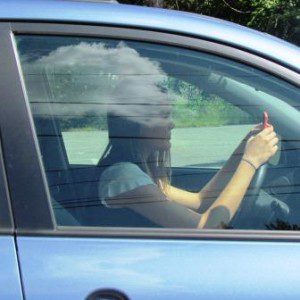
Accidents happen for a reason. Calling the collision of two cars “just an accident”, or shrugging it off as “not intentional” misses the point of civil liability.
Looking down to text, rolling through the light instead of stopping, and tailgating the car in front so closely that it’s impossible to stop when the vehicle in front stops are acts falling below the “reasonably prudent person” standard.
Negligence exists where conduct creates an unreasonable risk of harm. A person acts negligently when their actions depart from that of a reasonable person. This spells negligence.
Accidents & Underlying Fault
Accidents rarely happen without liability. Where drivers exercise reasonable care chances of crashing are miniscule. More often, two motor vehicle operators are both negligent and it is the legal system’s job to apportion fault.
Accidents & Analysis
Split second actions often underly negligence. Drivers accelerate to “beat the light”, barging into the intersection after the indicator flashes red. Other split second negligence includes weaving in and out of lanes without checking and “jumping in” from an entrance ramp rather than waiting. Little or no thought underlies such conduct but it spells breach of duty when it causes an accident.
The dismissive approach to deem certain events “just an accident” usually hides a refusal to face factors that underlie a negligence determination.
Negligenge Does Not Require Violation of Law or Regulations
Negligence should be separated from violation of law. More and more states are considering and passing laws against texting while driving. But, a regulation is not required to find negligence. Violation of a regulation brings a fine and sometimes can be used as evidence of negligence. But, even without such laws, anytime a driver drives inattentively, distracted by the CD player, eating, texting, chatting on the phone or otherwise not driving in full control, the negligence formula is completed.
Sure enough, running a stop sign is negligence. But blatant violation of driving regulations is not required to find negligence. Even without specific laws against texting, cell phoning eating or applying makeup while driving, where a motor vehicle operator’s attention is diminished by anything causing an accident, fault is established.
Negligence is Not Intentional
Negligence by definition is not intentional conduct, but conduct that breaches a duty to others, and therefore causes harm. All motor vehicle operators have a duty to operate a vehicle safely from the moment the engine is started. Breaching that duty by inattention, distracted driving or otherwise completes the negligence formula where others are injured.
I’ve represented a rear seat passenger injured when the driver and front seat passenger fought over controlling the CD player. Another client was rear-ended by a driver so engaged on the cell phone they were looking down and not at traffic. Yet another time the driver and front seat passenger were … well let’s just say they should have “gotten a room.”
For more on comparative fault, contributory negligence & apportioning liability: click here.
Views: 7




